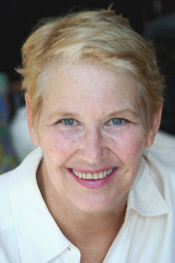
By Deanna Matzen, Operations Manager
I have been reading for the last couple of years a book by Philip Yancey entitled, "Soul Survivor: How Thirteen Unlikely Mentors Helped My Faith Survive the Church". I remember reading with delight that Annie Dillard, a Christian nature writer and Pulitzer Prize winner was included. I wanted to read that chapter first but I restrained myself starting at the beginning where there were many other wonderful profiles. But a few weeks ago I cracked and I decided to jump ahead and I want to share some reflections on what I read. But first, an excerpt from Yancey’s book:
I have been reading for the last couple of years a book by Philip Yancey entitled, "Soul Survivor: How Thirteen Unlikely Mentors Helped My Faith Survive the Church". I remember reading with delight that Annie Dillard, a Christian nature writer and Pulitzer Prize winner was included. I wanted to read that chapter first but I restrained myself starting at the beginning where there were many other wonderful profiles. But a few weeks ago I cracked and I decided to jump ahead and I want to share some reflections on what I read. But first, an excerpt from Yancey’s book:
Yancey goes on to describe how Dillard’s writings are punctuated with images of contradiction, that in the midst of describing the beauty of nature, the horror of nature is not far behind - like the illness that claimed her brother-in-law’s life ("Pilgrim at Tinker Creek") or a tragic plane accident ("Holy the Firm"). He then recalls a conversation he had with Dillard about these matters."Dillard acknowledges the world as the Creator’s work and then considers the consequences. What joke is this Creator playing on us? she asks…what lesson can we draw from such a work? The problem, as always, is that nature gives off mixed signals. Like the unruly child, the natural world both reveals and obscures God; creation groans, to use apostle Paul’s term….She says, ‘I alternate between thinking of the planet as home – dear and familiar stone heart and garden – and as a hard land of exile in which we are all sojourners.’ God must prefer working with one hand tied behind his back, she concludes.”
"We discussed C.S. Lewis’s notion that we must not go to nature to construct theology; she will fail us every time. Rather we go to nature once we have our theology and let her fill the words – awe, glory, beauty, terror – with meaning. ‘I like that,’ she said. ‘But you see, I’m trained as a literary critic, and I approach the whole chaos of nature as if it were God’s book. For many of my readers, that’s the only book of God they will read. I must start there.’”
 After reading those words, I spent some time with the questions: Do we create our theology and then take it to nature? Or do we draw our theology from nature?
After reading those words, I spent some time with the questions: Do we create our theology and then take it to nature? Or do we draw our theology from nature?These are not new questions to me as I have pondered the connections between faith and caring for the environment for many years. But this time I had clarity. It is not either/or. It is both. It reminds me of the story of the four blind people who feel an elephant and describe it as “trunk-like,” “ear-like,” “leg-like,” or “tail-like,” each is describing a part of the whole, holding a piece of truth. In the same way, I believe that every denomination, every theology holds a piece of the truth of God and if we put it all together we have more of the truth, but God is ultimately still a mystery.
Let us not hold too tightly to our dogma as the one and only truth. Nor hold too tightly to one characteristic about nature and say that it is the most representative characteristic of God. There is benefit in starting from nature to inform theology and in forming theology and enriching it with examples from nature. We gain something unique in both exercises and we create a more complex picture of God. A song sung with one line of music or one voice is much less rich and invigorating than a song sung with four lines of music by room full of people melded in perfect harmony.
"Plunge into matter by means of all created things, without exception, the divine assails us, penetrates us, and molds us. We imagine it as a distant and inaccessible, whereas in fact we live steeped in its burning layers." ~Teilhard de Chardin
No comments:
Post a Comment